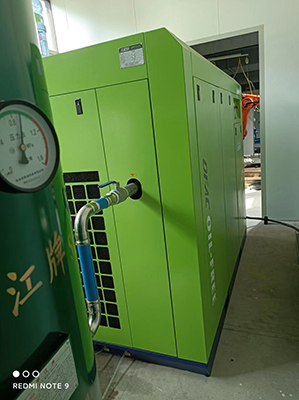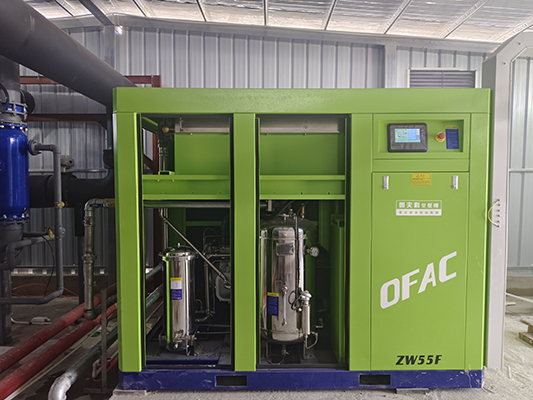medium pressure air compressor installation steps to ensure safe and efficient performance
News 2025-10-24
Medium pressure air compressors play a critical role in industrial applications, such as manufacturing processes, pneumatic tools in automotive assembly, and air supply in construction sites. These systems deliver reliable medium-pressure air that enhances operational efficiency, reduces energy consumption, and supports consistent production workflows. Proper installation is key to maximizing performance, minimizing downtime, and ensuring worker safety, as it directly impacts the compressor’s longevity and the overall productivity of industrial operations.

Site Preparation and Equipment Check
Begin by selecting an optimal installation location that is dry, well-ventilated, and structurally sound to prevent corrosion and overheating. Inspect the compressor unit for any shipping damage, verifying that all parts, including motors, tanks, and valves, are intact and match the specifications. Assemble required tools like torque wrenches, pressure gauges, and lifting equipment, while ensuring the site’s electrical and plumbing systems can handle the compressor’s demands. This step sets the foundation for a trouble-free installation, reducing potential hazards and aligning with efficiency goals in high-demand industrial environments.
Mounting and Connection Procedures
Secure the compressor to a stable base using appropriate fasteners to avoid vibrations that could lead to premature wear. Connect intake and discharge piping with high-quality fittings, ensuring seals are tight to prevent air leaks that compromise efficiency. For electrical setup, adhere to the manufacturer’s guidelines for wiring and grounding, integrating safety features like circuit breakers. In applications like food processing or pharmaceuticals, where air purity is vital, incorporate filtration systems during this phase to maintain performance standards and support seamless integration into production lines.
Implementing Safety Measures
Prioritize safety by installing protective devices such as pressure relief valves and automatic shut-off systems to handle potential overpressure situations. Ensure all moving parts are guarded and that operators are trained on hazard recognition, including risks from high-decibel noise or electrical faults. Compliance with standards from bodies like ANSI or EU directives not only safeguards personnel but also enhances the compressor’s reliability in critical sectors like mining or energy production, where failures can have significant operational consequences.
Testing and Optimization for Efficiency
After installation, run initial tests to confirm the compressor achieves specified pressure and flow rates without abnormalities. Monitor for vibrations, leaks, or unusual sounds, and adjust settings to optimize energy use. Establish a maintenance routine that includes regular filter changes and lubrication to sustain peak performance. In industries reliant on continuous operation, such as textiles or electronics, this approach ensures the compressor contributes to cost savings and high uptime, reinforcing its value in modern industrial processes.


